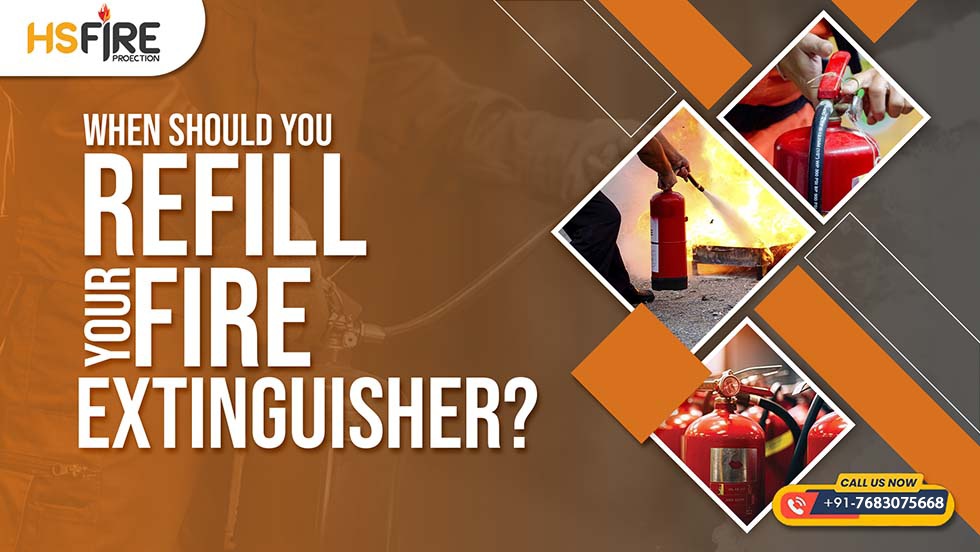Fire extinguishers are essential tools for ensuring safety in both homes and workplaces. However, like any safety equipment, they require regular maintenance and care to function effectively during an emergency. One crucial aspect of fire extinguisher maintenance is refilling, also known as recharging. But when exactly is fire extinguisher refilling required? Let’s explore.
- After Each Use
Anytime a fire extinguisher is used, even if only for a brief moment, refilling is mandatory. Once discharged, even partially, the extinguisher loses pressure and its ability to work effectively in future emergencies.
Why It’s Important
- A partially used extinguisher cannot deliver the required pressure.
- You cannot rely on it in the event of another fire.
Tip: Always refill your fire extinguishers immediately after use, no matter how minimal the discharge.
2. During Regular Maintenance or Inspections
Fire extinguishers need periodic inspections as per safety guidelines (such as NFPA or OSHA standards). Fire extinguisher refilling may be required during these checks if the following issues are detected:
- Low Pressure: If the pressure gauge indicates a drop in pressure.
- Damage: Any leaks, corrosion, or dents can affect performance and may require refilling after repairs.
- Expired Extinguishing Agent: Over time, the chemicals inside an extinguisher can degrade, making a refill necessary.
Inspection Frequency
- Monthly Checks: Conduct basic inspections for pressure, condition, and usability.
- Annual Maintenance: A professional inspection ensures proper function.
3. After the Expiry of the Fire Extinguishing Agent
Fire extinguishers come with a specific lifespan for the extinguishing agent inside. Depending on the type of extinguisher (e.g., CO₂, dry chemical, or foam), this period typically ranges between 5 to 10 years. Once the agent expires, the extinguisher requires refilling.
How to Check?
- Look for the expiration date or service tag on the extinguisher.
- Replace or refill the extinguisher as recommended by the manufacturer or fire safety professional.
4. After Damage or Pressure Loss
An extinguisher might lose pressure over time, even without use. This can happen due to:
- Physical damage (e.g., dents, cracks).
- Wear and tear on seals and valves.
- Environmental conditions (moisture, heat, or corrosion).
If the pressure drops, the extinguisher becomes unreliable and needs to be refilled or replaced immediately.
5. Post-Hydrostatic Testing
Hydrostatic testing is conducted to ensure the extinguisher’s cylinder is safe and can handle pressure. If an extinguisher passes this test, the extinguishing agent and pressure may need to be refilled to ensure full functionality.
When is Hydrostatic Testing Required?
- Every 5 years for pressurized water, CO₂, and wet chemical extinguishers.
- Every 12 years for dry chemical extinguishers.
Why Timely Refilling is Crucial
- Ensures Readiness: A refilled fire extinguisher is always ready to protect lives and property.
- Compliance: Regular refilling and maintenance ensure adherence to safety regulations and standards.
- Cost-Effective: Refilling is far more affordable than replacing an entire extinguisher.
Conclusion
Fire extinguishers are your first line of defense in controlling small fires. Regular checks, maintenance, and timely refilling are essential to keep them operational. Always refill your fire extinguisher after use, during inspections, or when it shows signs of pressure loss, damage, or expiration.
By staying proactive about fire safety, you ensure peace of mind, compliance with safety regulations, and the protection of lives and property.

